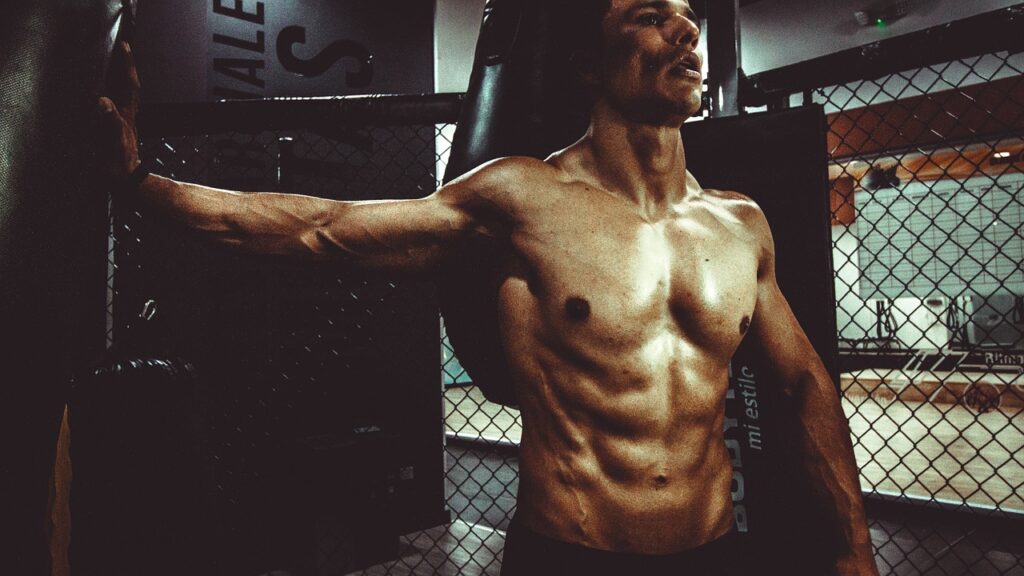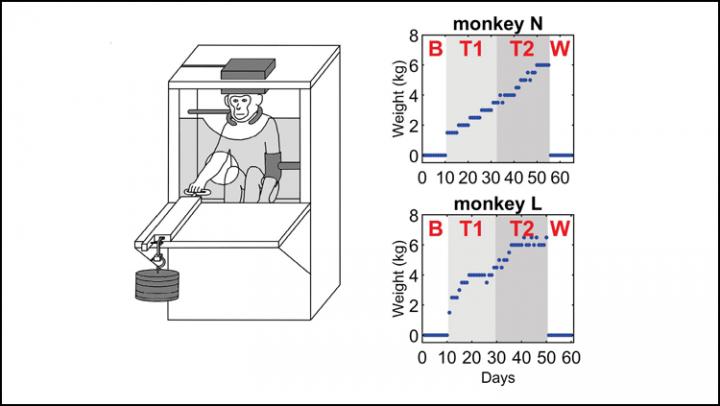
Weight lifting can be very confusing for beginners. Although you might train hard for weeks, there are barely any gains to show for. Don’t get discouraged, though — the gains will happen. And if it’s any consolation, a new study shows that nothing is in vain, after researchers found that the first few weeks of training strengthens the nervous system.
Your brain comes first, muscles later
Muscle growth, or “skeletal muscle hypertrophy”, is a complex biological process by which myosin filaments are added to each muscle fiber. In time, given proper training and enough protein intake, muscles will grow in volume.
However, every training starts with the contraction of thousands of small muscle fibers, which are directed by brain signals that tell the muscles “start flexing”.
The brain orchestrates such movements using two major neural highways descending to the spinal cord: the corticospinal tract (CST) and the reticulospinal tract (RST).
“Weight lifting trains both your muscles and your nervous system. Whilst body builders might focus on muscle mass, it’s the underlying neural changes that really interest us. If we understand the neural basis of strength, we may be able to develop techniques to increase it in individuals suffering from muscle weakness due to injury or disease,” Dr. Isabel Glover, a neurologist at the University College London and lead author of the new study, told ZME Science.
“There are several different pathways that control movement. The corticospinal tract is the main pathway in primates and is responsible for complex movements like playing the piano. An evolutionary older pathway is the reticulospinal tract, which is associated with more basic actions such as making a fist.”
The corticospinal tract is a white matter motor pathway starting at the cerebral cortex that terminates on lower motor neurons and interneurons in the spinal cord. Scientists believe the CST is the dominant pathway, whereas RST controls posture.
Since CST does not change at all during strength training, the more primitive RST is believed to be primed during resistance training.
In their new study published in the journal JNeurosci, researchers trained monkeys to pull a weighted handle using only one arm. The weight was gradually increased over twelve weeks of training.
Training a monkey to lift weights, however, was rather challenging and required quite a bit of convincing work (and treats).
“Strength training is challenging by definition, and it’s always difficult to assess when we’ve reached our physical limits versus when we’re struggling with motivation. A personal trainer’s job is to provide their clients with encouragement so they can get as close as possible to those physical limits – our job in the lab was the same. Whilst a personal trainer may use words, we used food to keep our two monkeys motivated, rewarding each rep with their favourite treats. It was great to see their displays of strength when chocolate was on the menu,” Glover recounts.

Each day, the researchers measured electrical activity in the arm muscles while stimulating the motor cortex and the two motor tract pathways. The results suggest that over the course of the training, the electrical response in the muscles increased.
After three more months of training, stimulating the RST generated a stronger response in the side of the spinal cord connected to the trained arm. This suggests that RST could be the driving force behind increases in strength.
“This result is exciting because whilst injuries such as stroke generally damage the corticospinal tract, the reticulospinal tract is often spared and so the capacity for strength training might be spared too,” Glover told ZME Science.
“Although strength training is typically associated with weight lifting in the gym, our focus is on rehabilitative strategies to help individuals suffering from a loss of strength. The more we understand about the neural basis of strength, the better equipped we are to restore strength following an injury. We’re particularly interested in stroke since the pathway we found to underly strength in this study is the same pathway that we’ve previously shown to be involved in stroke recovery. As we explore ways to increase activity in this pathway, it may become possible to restore some degree of strength through techniques that focus on increasing neural strength, not just muscular strength.”
As for regular people who’ve just hit the gym seeking to cut some of those lockdown-era extra pounds, don’t despair — your nervous system is actually working hard behind the scenes. Your muscles will follow.
“Strength training doesn’t just work your muscles, but also your nervous system – we’ve identified a spinal pathway that underlies these neural changes. Gym-goers shouldn’t feel disheartened if they don’t see bulging biceps in the first few weeks of a new training programme, their reticulospinal tract is getting stronger behind the scenes,” Glover said.






